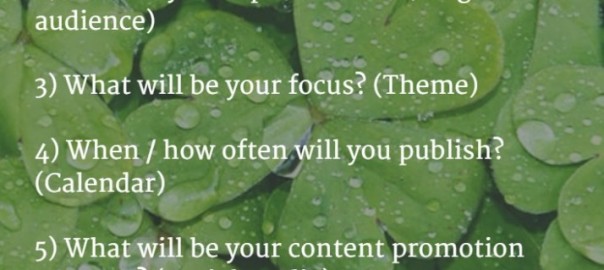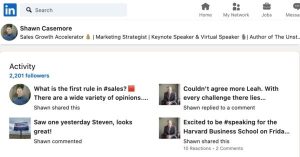You know the importance of having a strategy for your blogging activities, but do you know how to establish this strategy? Creating a blog strategy is crucial to your work, but if it isn’t created effectively, it won’t be easy to maintain it.

The most important thing to remember about your blog strategy is that it needs to be maintainable. Without establishing a strong strategy from the start, you risk losing strength over time, and your strategy may ultimately fail as a result.
These 7 fundamental steps to creating a blog strategy will give you everything you need to build a structure that will maintain its strength and effectiveness over time.
———
1) What are your blog’s purpose and goals? (Foundation)

The beginning of your blog strategy development should involve establishing your blog’s foundation. This means you need to know why you’re blogging (purpose) and what you hope to achieve from it (goals).
Your purpose is best expressed through a mission statement. Create a 1-3 sentence description of the reasons for your blog as well as its value to your overall business objectives. Be prepared to make changes to this statement over time as you grow, but always try to follow it as the baseline for your activity.
Your blog goals must be clear and actionable. Ideally, they should be SMART:
Specific
Measurable
Attainable
Realistic
Time-bound
When you create goals with this approach, you’re much more likely to achieve them. They’ll also be stronger and more effective at guiding your efforts.
2) Who do you hope to reach? (Target audience)

Your blog strategy must have a target audience clearly defined. Ask yourself:
“If I were to write a blog post, who do I want to see reading it, and what do I hope for them to do afterwards?”
When you have a clearly defined target audience and know exactly what you want them to do with your content, you are on your way to a better, higher blogging ROI.
Here are some ideas of what actions a target audience might take:
- Share your content on social media
- Leave a comment
- Click on your call-to-action
- Fill out your subscription form
The ultimate goal should be to have your content reach the right people and that those visitors take the ideal action you’re aiming for (such as subscribing to your newsletter).
3) What will be your focus? (Theme)

Without a blog focus, you’ll be writing randomly, which is not a suitable approach to take if you want to see results.
Find the theme and topics that you can clearly and effectively communicate about, making you a thought leader on the subject.
That is a goal you should always have: becoming a thought leader.
Although you should have other goals as well, you want your blog to have influence. You want to be respected for what you have to say. Otherwise, why are you writing advice and providing resources for others to read and use?
Give your blog a single focus, easily discussed with knowledge and experience, and have it be relevant to your overall business.
4) When / how often will you publish? (Calendar)

The next important element of your strategy should be a schedule or calendar.
- When will you publish your content?
- How often will you post something?
- Who will be in charge of what step of the process?
Sometimes, I find advice on content calendars that simply overwhelm, but your calendar doesn’t need to be that intense.
You can use online services (I recommend CoSchedule) or simply stick to Excel, but either way, you’ll want to customize it for your needs, not necessarily based on the leading trends.
Without some form of content calendar in your strategy, you’ll lose yourself in the blogging process over time. You’ll become disorganized, which can ultimately become obvious to your readers.
Create and maintain a calendar with your strategy, and you’ll be better prepared for each stage of the blogging process.
5) What will be your content promotion strategy? (Social media)

After you’ve written a piece of content, you can’t just let it sit on your website without any form of external promotion. Sure, you can send emails to your contacts, and that’ll definitely help. However, you can’t ignore the value of social media promotion.
When you promote content on social media, you reach people who wouldn’t have thought of you otherwise, and this brings new people to your site.
Another major goal of your blogging should be to bring new traffic to your website. Social media is a great place to find these potential visitors, especially when you contribute on each platform effectively.
Research how best to use social media for each platform, and use that information in your own strategy. This will help you gain traction online so that your hard work doesn’t go ignored.
6) How will you measure your progress? (ROI)

You can do everything I’ve said so far to the letter. You can have what you consider the perfect strategy, but if you don’t include a measurement system, it’ll all go to waste.
Your main reason for blogging should be to get something out of it: a return on investment or ROI.
The only way to find out if you’re getting what you want is to measure the activity from your blog. This can include a wide range of measurements, from basic metrics to more complex details:
- Social media share count (basic)
- Conversion rate on your call-to-action (complex)
Find the metrics that matter most for your business: the ones that mean the most for your own strategy.
You may want to build credibility for your blog, and that would mean social media activity could be most important to you.
You may want to attract a specific audience that’ll advance to being leads for your business, and that would mean your CTA conversion rate could be more important.
When you’re able to measure your blog’s progress, you’ll have more opportunities for growth and success.
7) How will you apply what you learn? (Follow-up)

Finally, the last fundamental element of your strategy should be a system for how you’ll apply what you learn over time.
When you measure your progress, you’ll see places where you could improve and things that could change for better results.
To make the most out of your blogging, you need to know how you’ll apply the changes you find would be best for improvement.
After each step you take in your blogging activity, you need to measure the results. Every step of the way has lessons to be learned from. Don’t miss out on these opportunities to improve.
———
Quick Tips:
- Have your strategy written out in full. It prevents unnecessary guesswork and confusion.
- Pay attention to your strategy’s relevance and effectiveness. Keep it up-to-date with current trends and improvements.
- Allow room for changes over time. Your strategy is not set in stone.
Summary

- What are your blog’s purpose and goals? (Foundation)
- Who do you hope to reach? (Target audience)
- What will be your focus? (Theme)
- When / how often will you publish? (Calendar)
- What will be your content promotion strategy? (Social media)
- How will you measure your progress? (ROI)
- How will you apply what you learn? (Follow-up)
(111)







